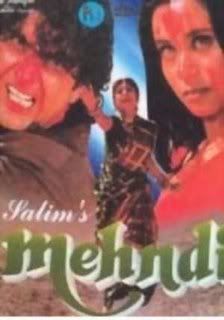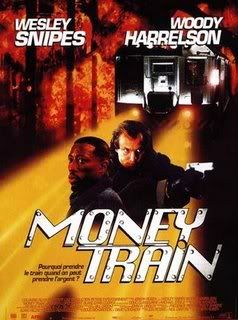
book Details
•Paperback: 336 pages
•Publisher: Addison-Wesley Professional; 2 edition (August 12, 1995)
•Language: English
•ISBN-10: 0201835959
•ISBN-13: 978-0201835953
The classic book on the human elements of software engineering. Software tools and development environments may have changed in the 21 years since the first edition of this book, but the peculiarly nonlinear economies of scale in collaborative work and the nature of individuals and groups has not changed an epsilon. If you write code or depend upon those who do, get this book as soon as possible — from Amazon.com Books, your library, or anyone else. You (and/or your colleagues) will be forever grateful. Very Highest Recommendation.
book Description
No book on software project management has been so influential and so timeless as The Mythical Man-Month. Now 20 years after the publication of his book, Frederick P. Brooks, Jr. (best known as the “father of the IBM System 360″) revisits his original ideas and develops new thoughts and advice both for readers familiar with his work and for readers discovering it for the first time.
From the Inside Flap
To my surprise and delight, The Mythical Man-Month continues to be popular after twenty years. Over 250,000 copies are in print. People often ask which of the opinions and recommendations set forth in 1975 I still hold, and which have changed, and how. Whereas I have from time to time addressed that question in lectures, I have long wanted to essay it in writing.
Peter Gordon, now a Publishing Partner at Addison-Wesley, has been working with me patiently and helpfully since 1980. He proposed that we prepare an Anniversary Edition. We decided not to revise the original, but to reprint it untouched (except for trivial corrections) and to augment it with more current thoughts.
Chapter 16 reprints “No Silver Bullet: Essence and Accidents of Software Engineering,” a 1986 IFIPS paper that grew out of my experience chairing a Defense Science Board study on military software. My co-authors of that study, and our executive secretary, Robert L. Patrick, were invaluable in bringing me back into touch with real-world large software projects. The paper was reprinted in 1987 in the IEEE Computer magazine, which gave it wide circulation.
“No Silver Bullet” proved provocative. It predicted that a decade would not see any programming technique which would by itself bring an order-of-magnitude improvement in software productivity. The decade has a year to run; my prediction seems safe. “NSB” has stimulated more and more spirited discussion in the literature than has The Mythical Man-Month. Chapter 17, therefore, comments on some of the published critique and updates the opinions set forth in 1986.
In preparing my retrospective and update of The Mythical Man-Month, I was struck by how few of the propositions asserted in it have been critiqued, proven, or disproven by ongoing software engineering research and experience. It proved useful to me now to catalog those propositions in raw form, stripped of supporting arguments and data. In hopes that these bald statements will invite arguments and facts to prove, disprove, update, or refine those propositions, I have included this outline as Chapter 18.
Chapter 19 is the updating essay itself. The reader should be warned that the new opinions are not nearly so well informed by experience in the trenches as the original book was. I have been at work in a university, not industry, and on small-scale projects, not large ones. Since 1986, I have only taught software engineering, not done research in it at all. My research has rather been on virtual reality and its applications.
In preparing this retrospective, I have sought the current views of friends who are indeed at work in software engineering. For a wonderful willingness to share views, to comment thoughtfully on drafts, and to re-educate me, I am indebted to Barry Boehm, Ken Brooks, Dick Case, James Coggins, Tom DeMarco, Jim McCarthy, David Parnas, Earl Wheeler, and Edward Yourdon. Fay Ward has superbly handled the technical production of the new chapters.
I thank Gordon Bell, Bruce Buchanan, Rick Hayes-Roth, my colleagues on the Defense Science Board Task Force on Military Software, and, most especially, David Parnas for their insights and stimulating ideas for, and Rebekah Bierly for technical production of, the paper printed here as Chapter 16. Analyzing the software problem into the categories of essence and accident was inspired by Nancy Greenwood Brooks, who used such analysis in a paper on Suzuki violin pedagogy.
Addison-Wesley’s house custom did not permit me to acknowledge in the 1975 Preface the key roles played by their staff. Two persons’ contributions should be especially cited: Norman Stanton, then Executive Editor, and Herbert Boes, then Art Director. Boes developed the elegant style, which one reviewer especially cited: “wide margins, and imaginative use of typeface and layout.” More important, he also made the crucial recommendation that every chapter have an opening picture. (I had only the Tar Pit and Rheims Cathedral at the time.) Finding the pictures occasioned an extra year’s work for me, but I am eternally grateful for the counsel.
Deo soli gloria or Soli Deo Gloria — To God alone be the glory.
Chapel Hill, N.C., F.
For more free books download visit this blog daily
Download
OR
Download
OR
Download
OR
Download
OR
Download
OR
Download
.






0 Response to "The Mythical Man-Month: Essays on Software Engineering"
Post a Comment